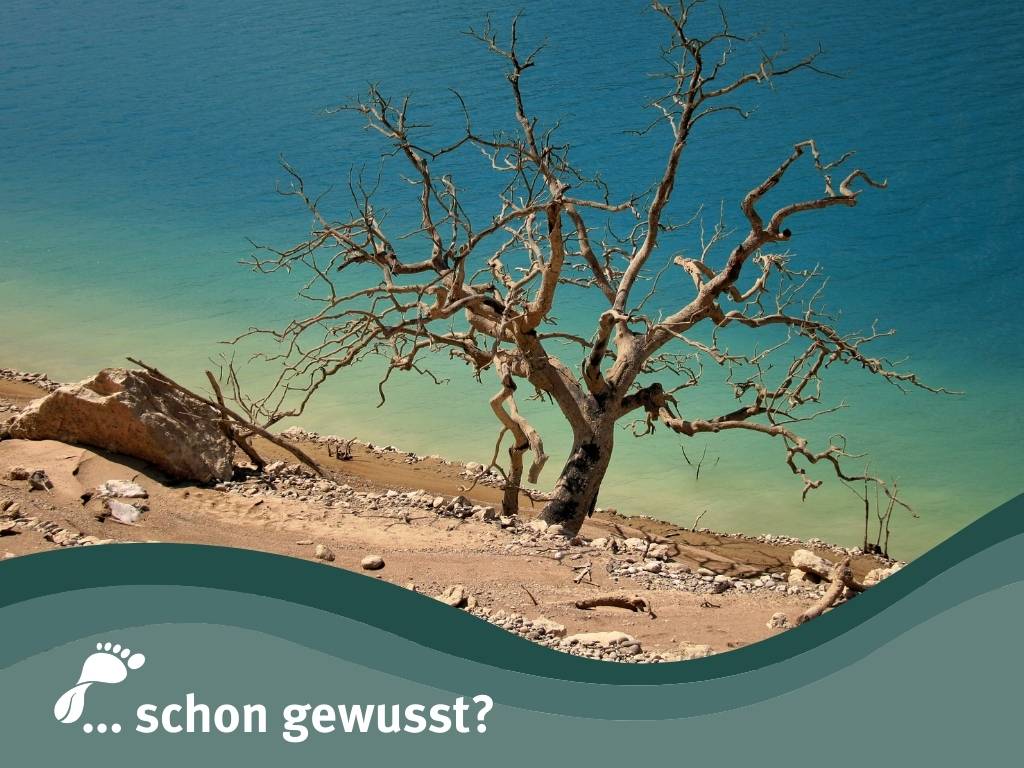
This summer, climate change was extremely hard on everyone
The year 2022 was characterized by periods of extreme weather around the globe. The summer in particular had it all: all-time record temperatures, heavy rainfall with flooding, prolonged dry spells accompanied by drought, failed harvests and extremely low water levels in rivers and lakes as well as forest fires and devastating hurricanes, including in Europe.
Omar Baddour, Head of the Climate Monitoring Department at the World Meteorological Organization(WMO) in Geneva, says: "This combination can happen, but the extent is impressive and seems to be very unusual. Almost a third of the northern hemisphere was affected. There have always been weather extremes. But it is clear that they are becoming more frequent and more intense as a result of climate change."
The death toll was dramatically high and is expected to continue to rise dramatically, reaching the same level as the number of cancer deaths by the end of the century, according to a report by the Red Cross and the UN.
The following regions were particularly hard hit:
In west-central Europe, there were all-time record temperatures, prolonged periods of drought, in some places with heavy rainfall caused by storm fronts, which led to flooding and major damage, an unusually high number of forest fires and an increased risk of storms. Agriculture suffered the most due to the low water levels and the high degree of soil dehydration, as did shipping and energy production. France, Portugal, Spain and Italy experienced record droughts. In many places, water use was heavily regulated or restricted.
In Austria, the east was hit by record temperatures and prolonged drought. In the south and west, there were an unusually high number of forest fires and heavy rainfall events such as storm fronts with squalls, which led to mudslides and flooding, among other things.
Germany also experienced record high temperatures, massive drought in certain areas and excessive water volumes elsewhere due to storm fronts. Like many other European rivers, the Rhine experienced its lowest level ever.
A disastrous year for Alpine glaciers.
- World Meteorological Organization (@WMO) September 28, 2022
Lack of winter snow and brutal summer heat ➡️Swiss glaciers lost more than 6 % of their ice volume
(years with a loss of 2% classed as "extreme").
Glacier melt is one of WMO's #StateofClimate indicators.@scnatCH https://t.co/lzpFVQE8KN pic.twitter.com/X9tFkLPeFL
The Sahel region in Africa from Djibouti to Senegal experienced an unusually prolonged period of drought, causing around 350 million people, or a quarter of the population, to suffer from hunger, according to the International Committee of the Red Cross. Nigeria, on the other hand, was hit by heavy rainfall and accompanying floods.
China suffered from an unprecedented drought, which led to power cuts as well as droughts and widespread crop failures. Entire lakes dried up, and in some places long-hidden treasures came to light. A close observer of extreme weather events, weather historian Maximiliano Herrera, told the New Scientist: "There is nothing in the climatic history of the world that is even remotely comparable to what is happening in China."
North America: Half of the US population also suffered from the prolonged dryness and drought. Rivers and lakes reached record low levels, such as the Great Salt Lake in Utah and the Colorado River. Water use was severely restricted in many places. Parts of Mexico were also affected.
Northern India and southern Pakistan were also badly affected: the extremely warm spring with record temperatures in May was followed by devastating floods in which millions of people lost everything and around 700,000 animals died, according to the WMO. Pakistan recorded a threefold increase in average rainfall in the summer months.
How big was the impact of climate change on these weather events? With the help of the relatively new field of attribution research, scientists are trying to find out whether individual weather events can be attributed to climate change. A team from ETH Zurich as part of the World Weather Attribution Group used various complex climate models to analyze precipitation, temperatures and weather patterns in the summer months since 1850 and created an attribution analysis.
Dominik Schumacher's team concludes that this extreme summer would not have taken place without climate change because the average temperature would have been 4 degrees cooler. For Western and Central Europe, they calculated that climate change has made agricultural and ecological drought around three to four times more likely in 2022, while the drying out of the upper soil layer has become five to six times more likely.
Furthermore, Schumacher and his team conclude that these extreme weather events could now repeat every 20 years, as opposed to every 400 years without climate change. (https://www.scinexx.de/news/geowissen/extremsommer-2022-ohne-klimawandel-praktisch-unmoeglich/)
The above-average warming of the polar ice cap region has led to a change in global air circulation flows, says Omar Baddour, resulting in prolonged, unchanging weather situations such as this summer's dry spell in Europe.






